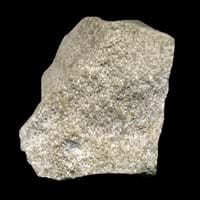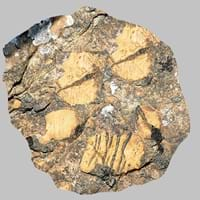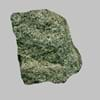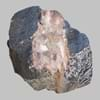Definition
Oolite is a sedimentary rock formed from ooids, spherical grains which are composed of concentric layers of calcite
Diamictite is a sedimentary rock that consists of non-sorted to poorly sorted terrigenous sediment containing particles that range in size from clay to boulders, suspended in a matrix of mudstone or sandstone
Origin
Unknown
Southern Mongolia
Discoverer
Unknown
Unknown
Etymology
From oo- + -lite, after German Oolit. A rock consisting of fine grains of carbonate of lime
From Greek dia through and meiktós or mixed
Class
Sedimentary Rocks
Sedimentary Rocks
Sub-Class
Durable Rock, Medium Hardness Rock
Durable Rock, Soft Rock
Group
Volcanic
Not Applicable
Other Categories
Fine Grained Rock, Opaque Rock
Coarse Grained Rock, Opaque Rock
Texture
Clastic or Non-Clastic
Clastic
Color
Black, Blue, Brown, Cream, Green, Grey, Pink, Red, Silver, White, Yellow
Brown, Buff
Durability
Durable
Durable
Appearance
Rounded and Rough
Banded
Interior Uses
Decorative Aggregates, Flooring, Interior Decoration
Decorative Aggregates, Interior Decoration
Exterior Uses
As Building Stone, As Facing Stone, Garden Decoration, Paving Stone
As Building Stone, Paving Stone
Other Architectural Uses
Not Yet Used
Curbing
Construction Industry
Cement Manufacture, Cobblestones, Landscaping
As Dimension Stone, Construction Aggregate, for Road Aggregate, Landscaping, Roadstone
Medical Industry
Not Yet Used
Not Yet Used
Antiquity Uses
Artifacts
Artifacts
Commercial Uses
Creating Artwork, Jewelry, Used in aquariums
Commemorative Tablets, Creating Artwork, Production of Lime
Types
Not Available
Bedded Diamictite and Laminated Diamictite
Features
Available in lots of colors, Generally rough to touch, Very fine grained rock
Host Rock for Lead, Is one of the oldest rock
Archaeological Significance
Monuments
Not Yet Used
Not Yet Used
Famous Monuments
Not Applicable
Not Applicable
Sculpture
Not Yet Used
Not Yet Used
Famous Sculptures
Not Applicable
Not Applicable
Figurines
Not Yet Used
Not Yet Used
Formation
Oolites form when layers of calcite are deposited around a sand grain or fossil piece and are rolled around in calm water, which makes them round.
Diamictite is unevenly sorted terrigenous, non-calcareous sedimentary rock which forms due to weathering of mudstone and sandstone.
Mineral Content
Calcite, Chert, Clay, Dolomite, Quartz, Sand, Silt
Calcite, Clay, Feldspar, Micas, Quartz
Compound Content
Aluminium Oxide, Ca, NaCl, CaO, Iron(III) Oxide, FeO, MgO
Not Available
Types of Metamorphism
Not Applicable
Not Applicable
Types of Weathering
Biological Weathering, Chemical Weathering, Mechanical Weathering
Biological Weathering, Chemical Weathering
Types of Erosion
Chemical Erosion, Coastal Erosion
Chemical Erosion, Coastal Erosion, Water Erosion
Grain Size
Fine Grained
Coarse Grained
Fracture
Conchoidal
Conchoidal to Uneven
Streak
White
Light to dark brown
Porosity
Less Porous
Highly Porous
Luster
Pearly to Shiny
Grainy, Pearly and Vitreous
Cleavage
Non-Existent
Not Available
Toughness
1
Not Available
Specific Gravity
Not Available
4.3-5.0
Transparency
Opaque
Opaque
Density
Not Available
2.2-2.35 g/cm3
Specific Heat Capacity
Not Available
Resistance
Heat Resistant, Wear Resistant
Heat Resistant, Impact Resistant
Deposits in Eastern Continents
Asia
Brunei, India, Indonesia, Malaysia, Singapore, Thailand, Vietnam
China, India, Kazakhstan, Mongolia, Russia
Africa
Cameroon, Chad, Ghana, Kenya, Malawi, Sudan, Tanzania, Togo, Zambia, Zimbabwe
Namibia, Nigeria, South Africa
Europe
United Kingdom
Austria, Denmark, Germany, Great Britain, Netherlands, Norway, Poland, Sweden, Switzerland, United Kingdom
Others
Not Yet Found
Not Yet Found
Deposits in Western Continents
North America
USA
Canada, USA
South America
Colombia
Brazil, Venezuela
Deposits in Oceania Continent
Australia
Adelaide, New Zealand, Queensland, Tonga, Victoria, Yorke Peninsula
New South Wales, New Zealand
All about Oolite and Diamictite Properties
Know all about Oolite and Diamictite properties here. All properties of rocks are important as they define the type of rock and its application. Oolite and Diamictite belong to Sedimentary Rocks.Texture of Oolite is Clastic or Non-Clastic whereas that of Diamictite is Clastic. Oolite appears Rounded and Rough and Diamictite appears Banded. The luster of Oolite is pearly to shiny while that of Diamictite is grainy, pearly and vitreous. Oolite is available in black, blue, brown, cream, green, grey, pink, red, silver, white, yellow colors whereas Diamictite is available in brown, buff colors. The commercial uses of Oolite are creating artwork, jewelry, used in aquariums and that of Diamictite are commemorative tablets, creating artwork, production of lime.










